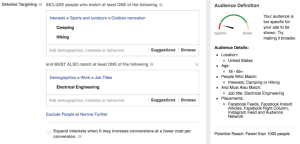— March 11, 2019
At the end of 2018, Google announced they now use Mobile First Indexing (MFI) for more than half of their search results worldwide. The changes have been in the works since 2016 due to significant increases in the amount of users searching Google from mobile devices. Since Google is by and large the most popular search engine, with over 60% more searches than the second place search engine, ensuring your site adheres to MFI standards is vital to getting your audience to see your business.
That coveted position on the first search engine results page (SERP) now has one more stipulation, but how do you know your site is suited for MFI? Understanding what MFI is and just how significant mobile searches are becoming are the first steps towards optimizing your site for Google’s latest rule.
What Is Mobile First Indexing?
Normally, Google uses bots to crawl the desktop version of webpages and decide their SERP ranking. Now, MFI uses a smartphone Googlebot to crawl websites that simulates the way users access the search engine from their mobile devices. A desktop-friendly site is not much use to a mobile user, especially if that site is missing content for mobile viewers, or if a mobile version doesn’t exist at all. As Google is always working to improve the experience of its users, it is moving towards penalizing websites that don’t cater to mobile viewers.
Mobile First Indexing does exactly what is in its name: it favors sites with mobile versions or responsive designs over desktop-only sites. A site with a mobile version means that the site developer created two different sites, one for desktop viewers and a smaller, lighter, and possibly slightly different one for mobile viewers, and the appropriate site opens based on what type of device a user visits from. Responsive design renders code automatically to suit the device that loads it; there is only one website, and it adjusts itself. Either of these types of sites are favorable to MFI.
As a business owner or site manager, you might wonder why MFI should affect you. Your number one goal is most likely getting leads to visit your site, so any part of Google’s ever-changing algorithm for search results is your concern. You may not realize how many of your users are driven to your site from a mobile device, and how many of them are turned away because your site doesn’t put “mobile first”.
Mobile Search Rates
If you’re thinking mobile searches don’t apply to your business’s audience, think again. Between 50% and 60% of all Google searches now occur on mobile devices. You can always track your own website’s traffic analytics using tools like Google Analytics to see how many users are coming to your site from a mobile device, but chances are your traffic reflects those percentages as well. Whether your business caters to individual shoppers or B2B, your target audience members are likely often on the go and enjoy the ease of access mobile searching provides.
There are a multitude of statistics available on mobile marketing data that can give you a good estimate of how common mobile searches are for your demographic. One interesting study from Hitwise found the percentages of mobile searches per industry. The number one sector for mobile searches is the food and beverage industry at 72%, followed by health and sports both at 68%. All of the percentages for common industries like lifestyle and retail are at least over 50%. If your business falls into one of these common categories of online markets, it could be upsetting to imagine how much business you might be losing if your site does not meet the requirements for MFI.
Optimizing for MFI
Google says if you constructed your site using a responsive web design, you have nothing to worry about. Responsive designs, as previously mentioned, automatically render the appropriate content for the appropriate devices, which means they’re all set for MFI.
For other sites, Google lists a few common problems that usually prevent sites from being MFI-ready:
- Structured data. Many desktop sites put effort into structuring their data but don’t do the same for mobile. If you want to be MFI ready, make sure your site uses the same structured data for mobile and desktop, because MFI will only use your site’s mobile data in search results. Structured data is simply markups in your website’s code that lets Google know what type of content you have and where that content should go on SERPs.
- Alt text for images. Ensuring your site’s code includes alt-text is a super simple way to get it MFI ready. Search engines need alt-text, a description of an image, to understand the context of any pictures on your site. With alt-text, you’re telling Google what you have pictures of, so when users search for those pictures, Google can find your site for them. You can simply go through your code and find any image tags (<img src=“…”>) and add an alt field (<img src=“…” alt=“…”>).
- Missing quality content. One great mistake site managers make is filling their desktop sites with lots of high quality, diverse content… and completely leaving it out of their mobile sites. If Google is ranking your site based on MFI, then it’s going to judge your mobile content when ranking your site in its results. If there’s nothing worth ranking there, then your ranking will drop. It is always a good idea to have as much high quality, original content as you can on mobile and desktop sites.
Times are changing on Google (aren’t they always?), and you need to keep your business’s website front and center on search engine results pages. Ensure your site is MFI compatible and loaded with impressive content so you don’t miss out on any customer traffic.
Digital & Social Articles on Business 2 Community
(67)








